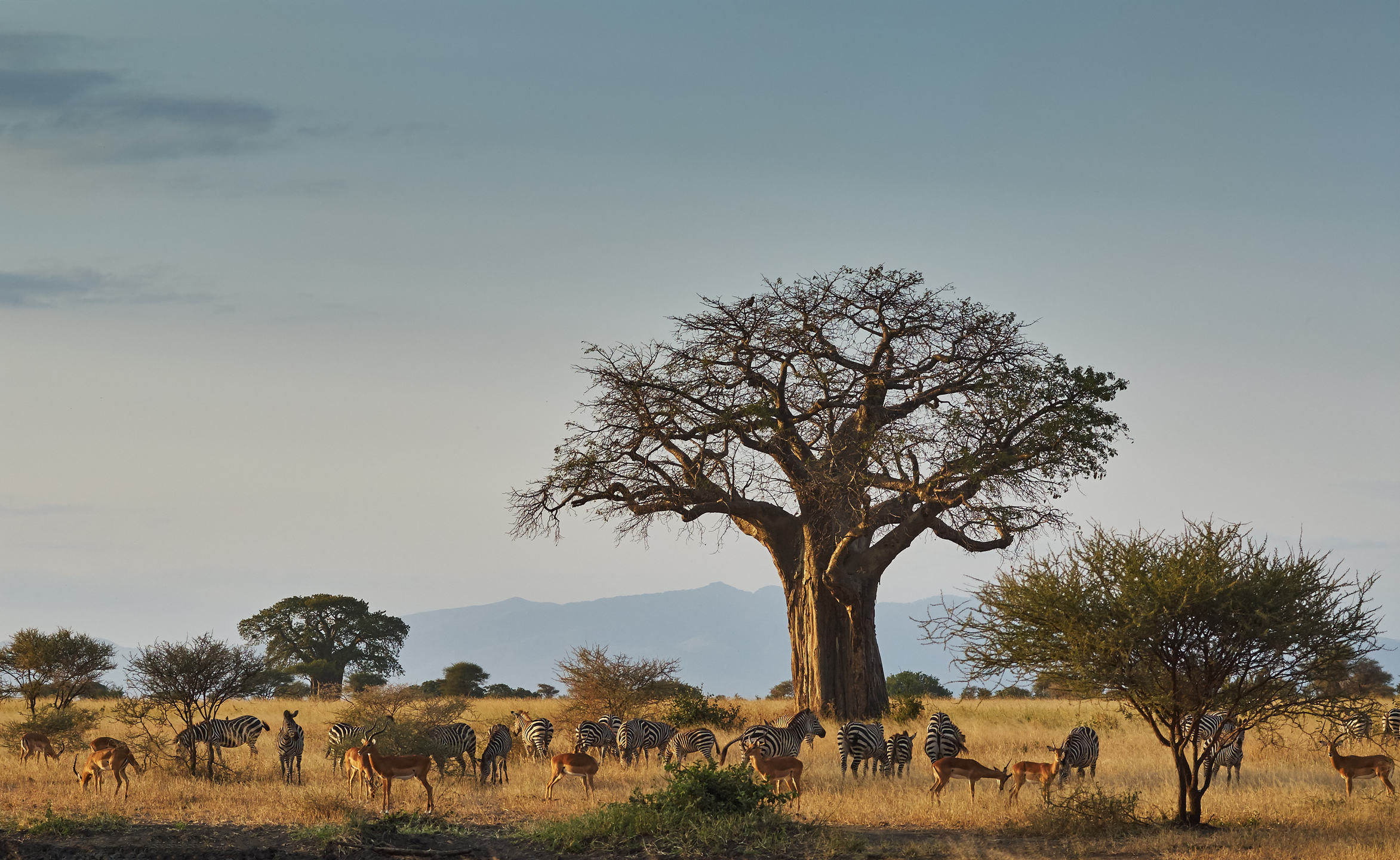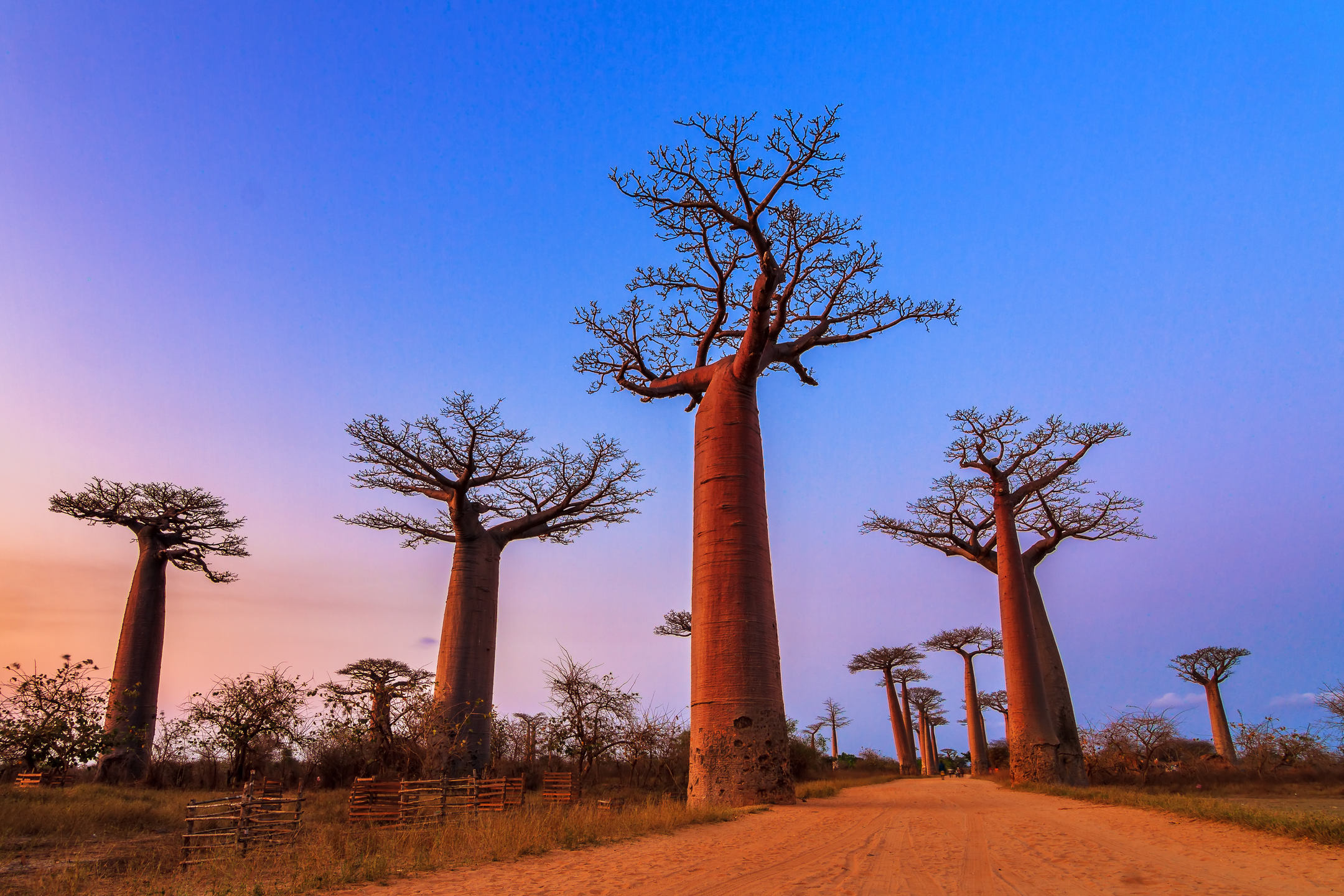The majestic and mystical baobab tree is iconic in the African Continent.
It lies in the heart of several traditional African folklore and remedies.
Install MyStart Theme for Google Chrome
Baobab predates mankind and is a prehistoric species of tree that has existed long before the splitting of the continents. Baobab is native to African Savannah, where the weather is arid and dry. In a landscape where little else thrives, baobab symbolizes resilience, positivity, and life.
Baobab is a succulent, meaning when it rains, it absorbs all the water and stores it in its enormous trunk. It produces a nutritious fruit in the dry season. That is why it is called “Tree of life.” It can live for thousands of years and grows in 32 African countries. It grows as high as an eight-story building and has an enormous circumference of 50 meters.
Manny savannah communities have build homes around baobab trees because they provide food, water, and shelter to humans and animals. The reason why a baobab tree is called the tree of life is that it thrives in some of the continent’s poorest, driest and remotest areas. However, it provides the communities living in those areas with food and water. It is a source of income for the people living there as the fruit from the tree is sold in the cities.

Health Benefits of Baobab Tree
The baobab tree has a myriad of health benefits.
Anti-Inflammatory
The baobab fruit extract has anti-inflammatory properties. The extract is used in medicines and helps with aches and pains.
Anti-Fever
Fevers like malaria are common in Africa and are a cause of death in many communities across the continent. Baobab fruit extract, pulp, bark, and seeds are used to help break the fever. Baobab fruit is also known to have pain-relieving properties like aspirin because of the presence of saponins, triterpenes, and sterols. Furthermore, according to a study conducted on rats baobab pulp helps protect the liver from damage.

Anti Microbial
Adding Baobab fruit pulp to soy products such as tempeh stopped the growth of bacteria related to Baccilus, Salmonella, and Streptococcus. Instead, there was a growth of beneficial bacteria such as Lactic acid bacteria. Fruit pulp also fights against E.Coli.

Anti-Viral
Baobab fruit pulp has anti-viral properties that help fight against herpes, influenza, and other respiratory viruses. The fruit has many bioactive compounds that make it an excellent anti-viral plant.
Anti-Parasitic
Several sicknesses and infections are caused by parasites that get into the bloodstreams of humans and animals. Baobab leaf’s extract has incredible anti-parasitic properties that are also used in modern medicines. The extract eliminates the parasite motility with an hour.

Baobab Fruit
Baobab fruit looks like a velvet-covered gourd, oblong in shape. It has black seeds and is surrounded by powdery pulp. People in Africa have named the tree Monkey-break tree and have known about its benefits for centuries. Baobab tree leaves can be cooked and eaten just like spinach, and the fruit pulp can be soaked and then combined into a drink.
The Baobab fruit has been hailed as the super fruit because it contains high levels of iron, calcium, and Vitamin C. Some reports suggest that the fruit has 10 times the amount of vitamin C found in an orange. It has more calcium than in spinach and is considered to be excellent for cardiovascular, skin, and overall health.

Cultivating Baobab
Baobab trees are a key component in our eco-system. They keep the soil humid and prevent erosion. They provide for a large range of savannah animals like lizards, birds, monkeys, and particularly elephants. Elephants break off the bark of baobab to drink water when there isn’t any nearby. The trees’ flowers are pollinated by bats, lemurs, and other small four-legged critters, usually at night. The flowers are nocturnal. It means that they only bloom after sundown.
Although African people don’t cultivate Baobab trees, they can be grown. The only downside is that it can take 15 to 20 years for the trees to grow fully. However, recent research suggests that by the grafting process, the trees can grow from seedlings in five years.

There is more than one variety of Baobab trees, and each one has different fruit with unique nutritional properties. It takes a lot of research into choosing the one that could be best for cultivation. The process of finding the tree best suited for cultivation at a location it isn’t naturally grown is known as domestication.
Many people are trying to cultivate Baobab trees in different locations in an effort to save them from going extinct. Several of the African Baobab trees have suddenly died after thousands of years due to climate change.
Install MyStart Theme for Google Chrome










